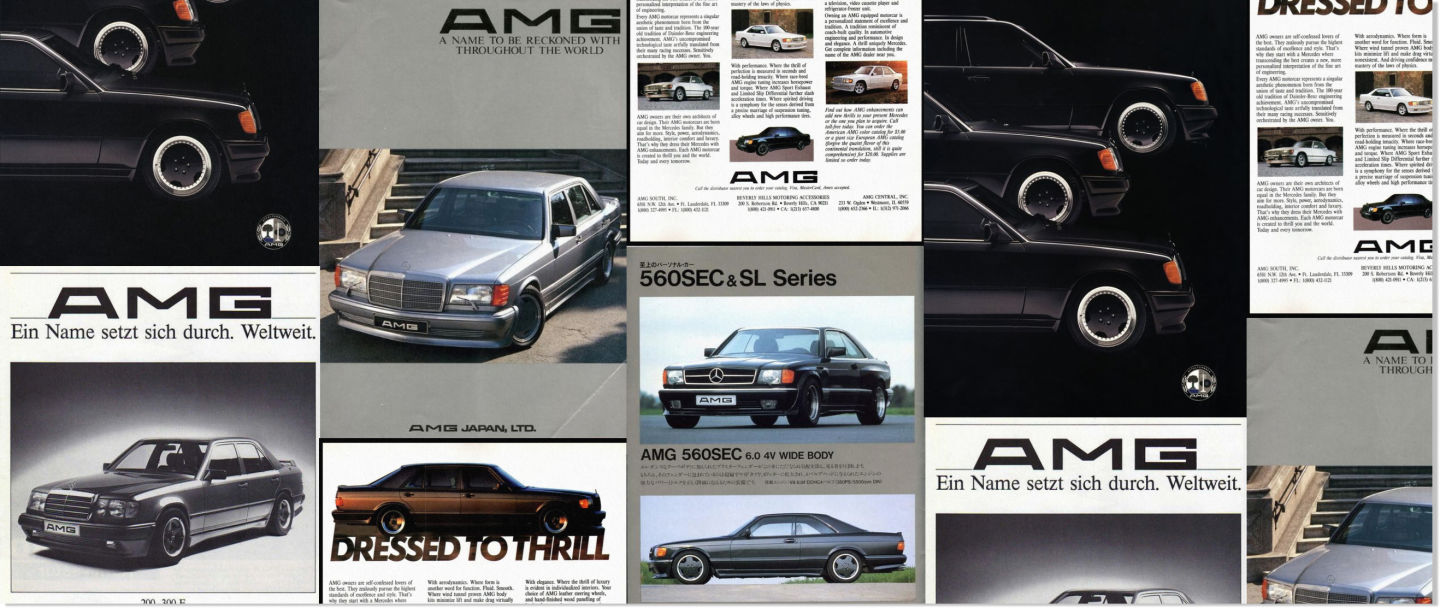Feature
What's so special about pre-merger AMG? We asked the experts.
Written by Connor Golden, Photography by Nick Rico
There isn’t a lot of mystery left in the automotive universe. The advent of the digital age has swept away shadows that long covered large swathes of the collector car world, transforming once-niche, long-underappreciated cars into overexposed social media darlings. One could be forgiven for believing that there’s no more stories to tell, no more mysteries to dispel, no more automotive blind spots to reveal.
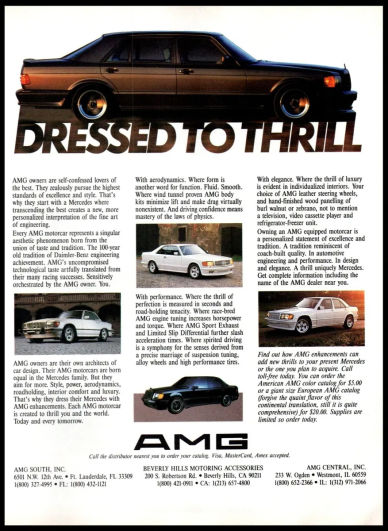
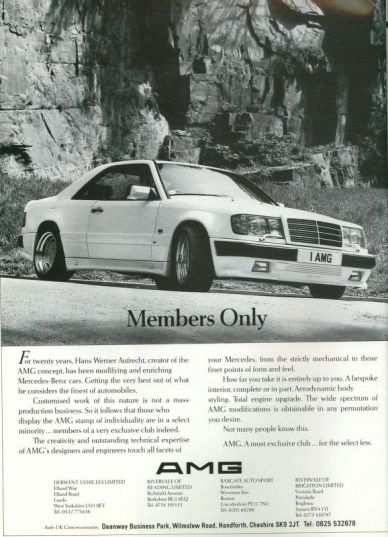
It’s heartening, then, that pre-merger AMGs — those cars officially produced prior to the 1993 joint-venture with Mercedes-Benz —remain impressively enigmatic. Well, that is until a recent spate of high-profile public sales of special pre-merger AMGs saw the gavel crack just shy of the seven-figure watermark, the shocking culmination of a gradual uptick in both values and interest of classic AMGs that has pushed these cars into collecting circles previously occupied exclusively by significant supercars.

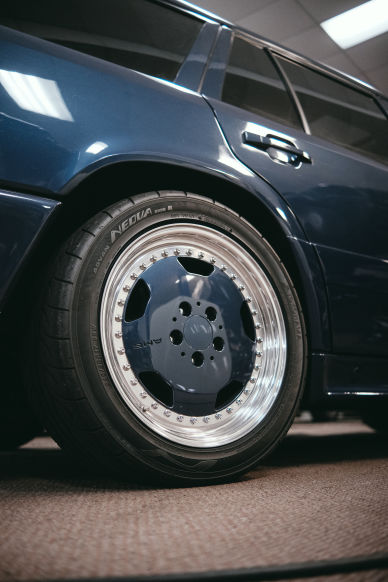
And yet, this uptick in attention has also revealed a lingering ocean of misinformation about these early AMG’s history, what sets them apart from standard production Mercs, and what goes into keeping these muscle missiles on the road. Digitized information on pre-merger AMGs is both scarce and often contradictory, so we turned to longtime early AMG specialist and collector Jonathan Hodgman of Blue Ridge Mercedes for insight. Hodgman first started the shop, located just outside of Atlanta, Georgia, back in 2002, and he has now spent more than twenty years in every nook and cranny of these early AMGs and old Mercedes.
The son of a world-class Austin-Healey restorer, Hodgman always had an inkling that he would one day forge a career for himself in the automotive space, but it was only when a family friend offered him a free, non-running 1979 280 SE (under the proviso he drive it out of its side-yard tomb) that Hodgman saw the universe pointing him down the path of the tri-pointed star.
“I fixed the clogged [catalytic converter] and did some basic maintenance and it fired up,” he recalls. “I drove it off-and-on over the next six years. I couldn’t kill the car, despite trying really, really hard. That’s what kind of turned me onto Mercedes.”
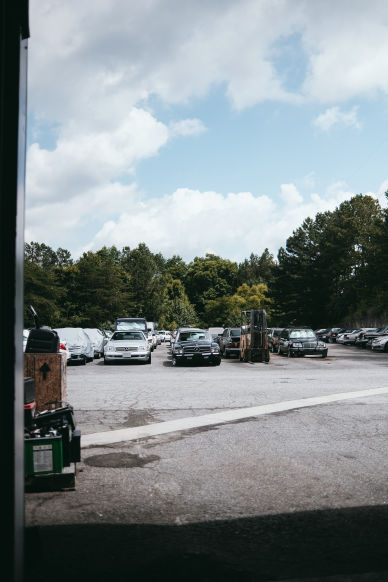

Following his college graduation, Hodgman bought himself a 1987 560 SEL, a car maintained as he continued shadetree service on local cars in his single-bay apartment garage. From there, an early AMG was a natural progression; the days of six-figure pre-merger cars were a distant dream when Hodgman picked up his first example.
“All the Mercedes techs and mechanics I talked to told me not to bother with them,” he laughs. “They told me they’re a pain in the ass, there are no parts for them, they’re put together like crap, no two are the same — basically, ‘you don’t want to get involved.’”
These warnings had the opposite effect on Hodgman.
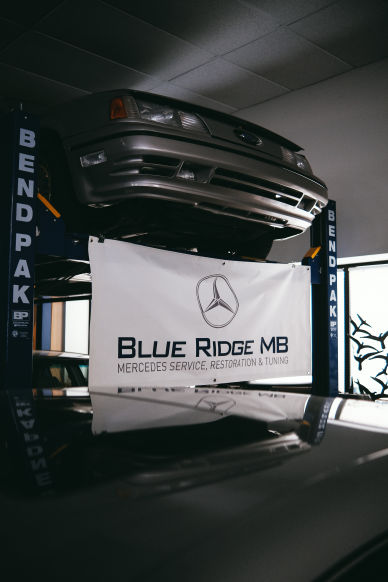

“I’ve always been one of those people that if you told me ‘no,’ that just made me redouble my efforts,” he says. “At the time, no one was paying attention to these cars that were $100,000, $200,000 when new, and they’re popping up for ridiculously cheap prices.”
“They’re weird, peculiar, and quirky — just like British cars, only German!”
Hodgman paid $14,000 for his first quad-cam SEL AMG, a car that would command $350,000 in today’s market. A different time, and a different Blue Ridge MB.
In the intervening years, Hodgman has become an early AMG guru, and Blue Ridge MB is one of the few shops outside of Germany providing meaningful service to these complex cars. Modern Mercedes dealerships likely won’t touch them, and even the might of Mercedes-Benz Classic wilts in the wake of vintage AMG weirdness. Hodgman, on the other hand, only welcomes the challenge.
“They’re weird, peculiar, and quirky — just like British cars, only German!” he laughs. “Maybe that’s why they didn’t scare me so much.”
To understand what makes these cars so mechanically formidable, it’s best to understand what AMG represented prior to its commercialization in the early 1990s. Founded in 1967 by ex-Mercedes engineers Hans Werner Aufrecht (the “A”) from Großaspach (the “G”) and Erhard Melcher (the “M”), AMG began as a race shop dead-set on flipping the stodgy, clinical perception of Mercedes products at the time.
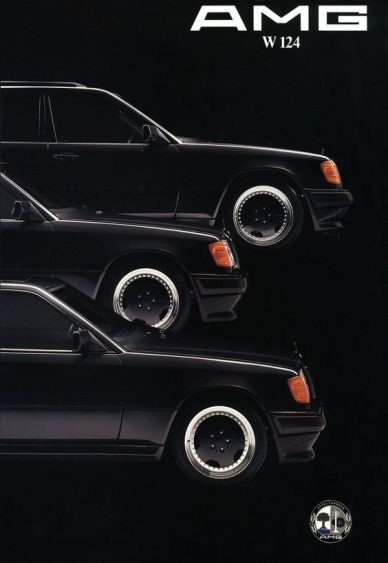
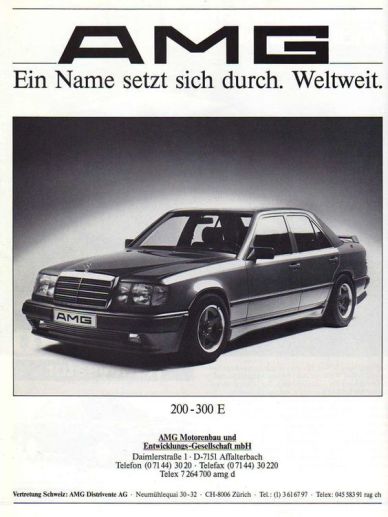
AMG’s first motorsports effort landed on the automotive landscape like a meteor. The stripped-out, hunkered-down tomato-red 300 SEL that showed up at Belgium’s 1971 24 Hours of Spa was distinctly unlike any four-door Mercedes the racegoers had ever seen, causing many to believe the entry was in jest. The saloon quickly became known as the “Red Pig.”
“AMG was one of the few tuners that…tried to tackle the whole car, not just the engine. They took what was good, and made it great. And at the same time, they gave these cars way more personality — the cars just start to talk more.”
The Red Pig’s resulting second-place class finish some 24 hours later was less funny than it was stunning, and thus was AMG’s reputation born. The race shop slowly began offering aesthetic accessories for Mercedes road cars and, soon, superficial body kits and wheels turned into full-on re-engineering services as AMG established itself as the go-to speedhouse for the fastest, most powerful, and most outrageous road-going sedans and executive coupes available at any price.
As Hodgman points out, the AMGs that rolled out of the Affalterbach shop between the late 1970s and the early 1990s are the cars that truly represent AMG’s maniac allure. AMG wasn’t the only Mercedes-focused tuning-house of that era, but they were the only ones to understand what it took to create a cohesive product.
“It’s hard to make a Mercedes better, especially the older cars, when it was cost-be-damned, we don’t care, no-expense-spared,” says Hodgman. “If you change one thing on a Mercedes, everything is so intertwined, there are ten other things behind it that need changing as well.”
What set AMG apart from those other shops, says Hodgman, was that they understood the need for a holistic approach to the entire car.
“AMG was one of the few tuners that…tried to tackle the whole car, not just the engine. They took what was good, and made it great. And at the same time, they gave these cars way more personality — the cars just start to talk more.”
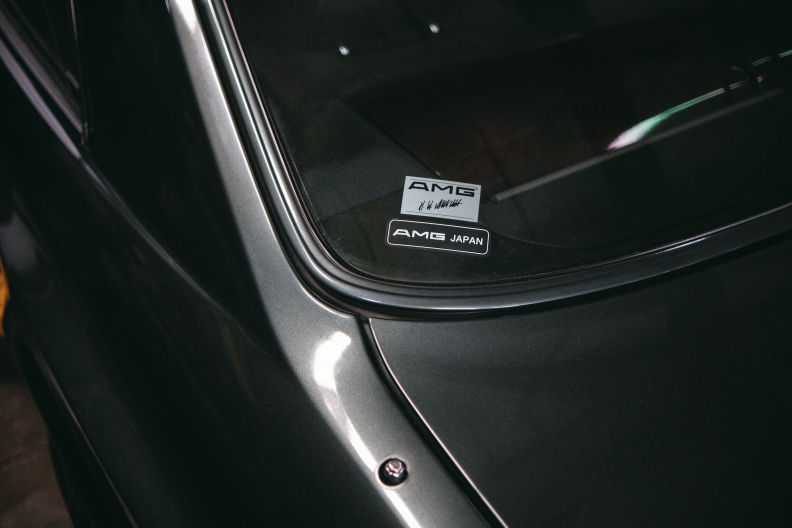
It was AMG’s innovative headwork on Mercedes’ M117 V-8 that made the most headlines. While customers could order an AMG-ified variant of the W126’s single-overhead-cam (SOHC) M117 in either 5.0-, 5.6-, and 6.0-liter flavors, it was its quad-cam conversion that cemented AMG as one of the premier independent automotive engineering firms on the planet.
In 1986, AMG shoehorned its new DOHC stunner into the mid-size W124 chassis, creating a Ferrari-fazing, Lamborghini-lickin’ 375-hp super-sedan that enraptured an entire generation of enthusiasts. A contemporary magazine test claimed the power “hit like a hammer,” and since the word for “hammer” in German is, well, “hammer” the name stuck and a legend was born.
The Hammer was a success, but all this top-level engineering came at a significant price: there are records of some top-shelf, one-off AMG “Hammers” leaving the Affalterbach workshop with $200,000-plus bills-of-sale – this at a time when a Ferrari Testarossa was around $180,000, a Rolls-Royce started at $100,000, and the sticker on a standard Porsche 911 Turbo struggled to climb above $70,000.

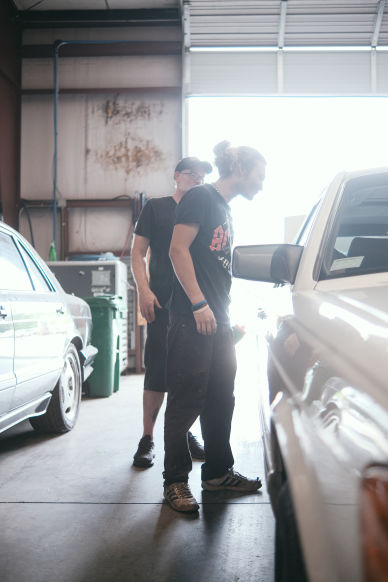
This astronomical price tag kept production — and public profiles — low. The sinister, swollen haunches and incongruous aural artillery fire of the Mercedes W124-based “Hammer” might have had big sway with Mercedes enthusiasts and car magazines but, in its day, the car’s staid source material allowed it to disappear in crowded parking lots – an effect that continues to the present day, as Mercedes slaps the AMG logo on every other Benz, thereby stripping away the badge’s power as the marker of sheer automotive lunacy. As a result, when values of these remarkable cars dwindled, so too did the number of enthusiasts willing to go to the financial and logistical lengths to keep these cars hale and hearty. Many have languished in the corner of garages, either as pickled time capsules or ramshackle hulks on their third engine and fifteenth owner.
This is where Blue Ridge MB steps in — if you’re got the checkbook.
“It’s not just doing brakes and oil changes and standard money-printing jobs at regular service shops. They’re not in-and-out in a day,” says Hodgman.
Even in the best examples, oil leaks are common, and even routine engine maintenance on the DOHC M117 — like a valve adjustment — can swallow a budget whole. And it’s not as if AMG themselves are much help.
“There are no resources for these cars,” Hodgman sighs. “It’s very much, ‘figure it out.’”
As a result, Blue Ridge MB is often forced to fabricate irreplaceable componentry in-house, leading to five-figure bills that can occasionally approach the $100,000 waterline. This is especially true for cars that have been sitting for extended periods of time.
“We all love low-mileage barn finds, but garages kill cars as much as outright neglect,” says Hodgman. “On cars that have been sitting for 15, 20 years, there’s a whole bunch of stuff that is worn out and rotted.”
I press him on what are some of the biggest issues.
“Fuel systems,” he says, almost immediately. “These cars sit, ethanol gets in them, and it just tears them up, front-to-back. Hoses, fuel pumps, tank — it all needs replacing. If you can find one that’s been driven regularly, and/or someone’s already been through it, you’re so, so far ahead of the game.”
I ask Hodgman what some of the biggest differences are when you look at post-merger cars — or those cars produced after the “soft” Mercedes takeover in 1993 — and the cars that arrived soon after.

“Once Mercedes became officially involved, everything started to become more polished as the might of their engineering and abilities crept in pretty quick,” he explains. “Things became more standardized, something built in a proper facility, and stopped being race cars built in the back garage. Really, they stopped being one-off bits of madness to something more conventional, more corporate.”
In other words, the pre-merger stuff has more personality — both on the road and on the shop lift.
“No two are the same. They’re all built by different guys, they’re all built by different [authorized] shops,” Hodgman says with a laugh. “There was no blanket methodology to it, and they didn’t come with directions. It’s frustrating at times, but also kind of fun from a historical point of view.”
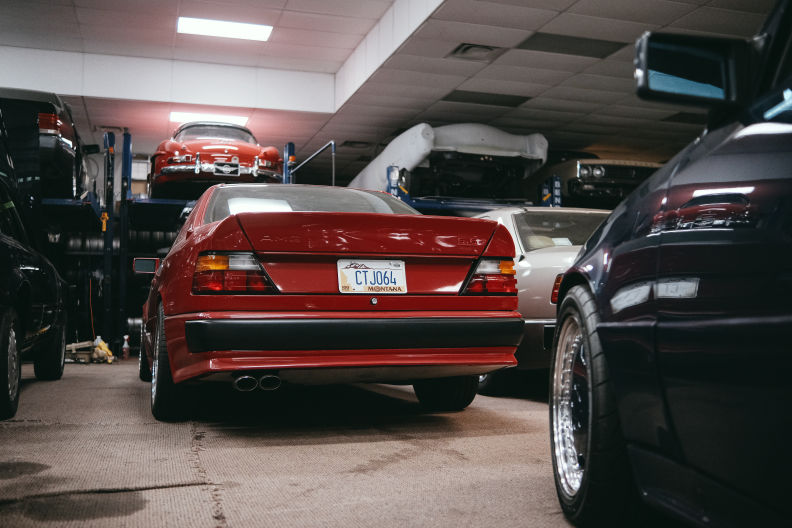
Unsurprisingly, many of the [pre-merger] cars wear undocumented ad-hoc production improvements that are only discovered when they come in for a major service.
“I’ve seen enough over the years where you actually see the evolution from an early car to the later cars where they fixed stuff along the way,” says Hodgman. “They were constantly changing, like your favorite band, where they start with a jam, and then years later they make an amazing album.”
But, according to Hodgman, all of this effort pays off once the car is on the road. These cars may have developed a reputation for wooden inputs, snappy rear-ends, and clumsy automatic transmissions, but those faults tend to be most prominent at low speeds – and these cars, says Hodgman, were not built to go slow.
“The faster you go, the better they drive,” says Hodgman. “They push down into themselves. Up to 120, 130 miles per hour, they’re super composed — you could drive them with one hand on the wheel if you wanted to. They were designed to blast on the autobahn for hours, and they feel good doing it.”
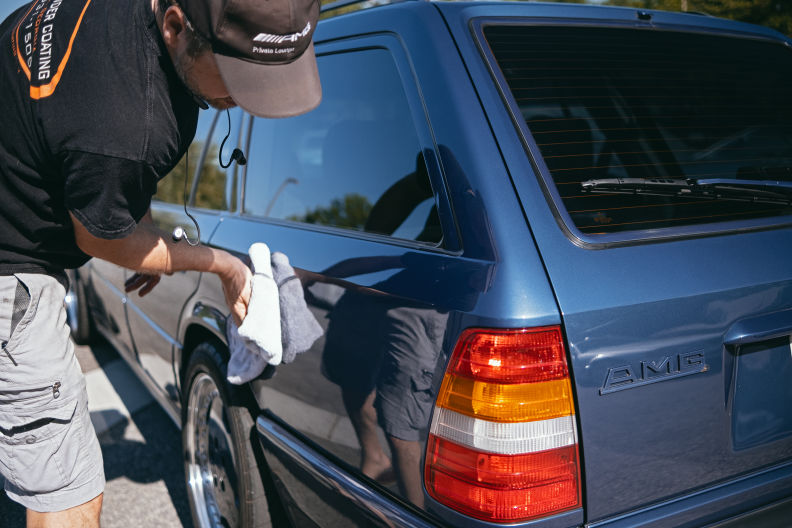
He tells us of taking his old AMG-ified W126 to a Road Atlanta track day, and of blowing the doors off an E46 M3 on a highway on the way to the track. It sounds incredible, especially when you consider that until recently, most people knew nothing about these cars.
So, what’s next for the community? Hodgman is hopeful.
“As [market] gains happen, and headlines are generated, it causes more folks to ‘remember’ them and maybe come into the mix,” he muses. “We’re being noticed. And the more you’re out there, the more people try and talk about you.”
More about Blue Ridge MB
Blue Ridge Mercedes Benz area family-owned workshop based in the greater Atlanta area and masters in the AMG craft.
Meet our contributors
A native of Dallas, Texas, Conner Golden is an LA-based automotive journalist whose work as has appeared in Motor Trend, Hagerty, Sports Car Market, and Automobile.
Nick Rico is an Atlanta based photographer with a passion for vintage motorsport.
Comments (...)
What to read next

Antares Au's full throttle shift from Wall Street to race track
0 comments

This Malaysian Porsche 911 went from scrapheap to showstopper
0 comments
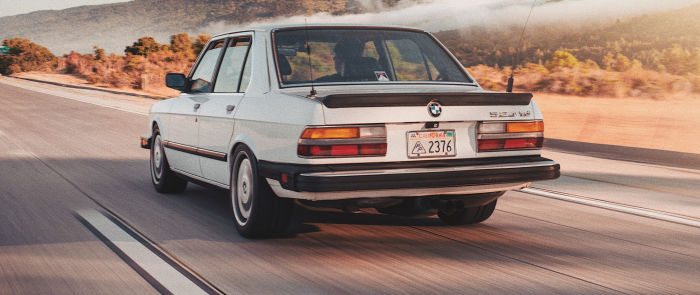
Enthusiast Roundtable: The BMW E28 is a classic driver for the modern world
0 comments
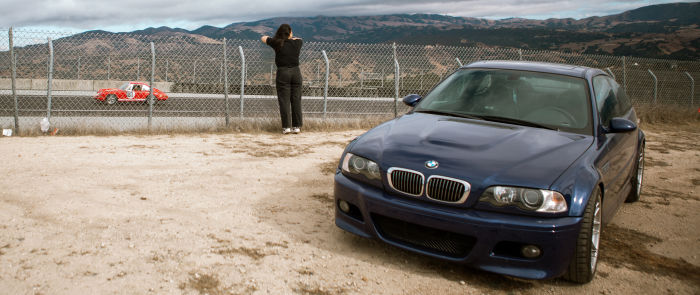
How Rennsport Reunion 7 transcends Porsche as the ultimate enthusiast gathering
2 comments
Before you get started
Please verify your account. You can do so by clicking on the link in the email we sent you.
Can't find your verification email? Click to resend it.
This website uses cookies. We do this to better understand how visitors use our site and to offer you a more personal experience. We share information about your use of our site with social media and analytics partners in accordance with our Privacy Policy. Additional information for California residents

